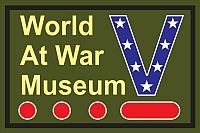|
|
| |
World at War Virtual Museum
Preserving World War II memories through education and living history. |  |
|
|
Seeds for Victory |
|  | |
| © Copyright Notice Unknown |
|
For British Vegetable Gardens
The back of the photo reads:
Nine tons of vegetable seeds have been sent to England by American farm woman as port of a shipment totaling 250 tons. R.S. Hudson, left, minister of agriculture, and B. de N. Cruger, British representative of the British War Relief Society of America, inspects the seeds.
|
|
| During both World Wars, the Seeds for Victory campaign was mainly used to encourage people to grow their own Victory Gardens. During World War II Seeds for Victory was expanded to help other countries by providing them with seeds so they can grow their own vegetables. |
| |
As part of Lend Lease program the United States provided countries like England, Russia, Brazil, India, and Africa with seeds. Also England received packages of seeds donated by Americans through the British War Relief Societies in the United States. For example, the British War Relief Society in New York City sent over 150,000 packages of vegetable seeds in 1942 alone. Those seeds were specially chosen with the adaptability for the cold English weather. The people who donated the seeds were able to leave their name on the donated seeds packages which resulted in many “thank you” letters sent back to the United States.
The seeds sent to Russia were mostly part of a Lend Lease Program. The intension was to avoid starvation of the Russian people due to the war and the scorched earth policy used by both armies. Most land was fertile, but without the Lend Lease Program there was nothing left to grow. This program provided food for the Russians just after the war and was used in the hopes to improve the U.S. relationship with Russia.
The Netherlands were always specialized in growing vegetables and fruits and exporting all over the world. Especially to the South American countries. When the Nazi Germans occupied the Low Countries the export of vegetables stopped. The United States was able to step in and provide seeds which helped the South American countries to cope with this shortage of vegetables.
The seeds were normally based on common garden varieties including beets, beans, cabbage, carrots, lettuce, onions, radishes, spinach, squash, tomatoes, and turnips. As part of the Lend Lease Program not all seed packages were vegetables only, for Russia the seeds also included field crops such as corn, grains, sorghums, soybeans, tobacco and herbs.
For our own and the Allied Countries, the seeds also included grass and clover. Those seeds were especially used for seeding down runways and military bases. |
|
| |
| |
|
|
|
| *** Copyright
(©)
2016-2017 - World At War Museum *** |
|
*** All rights reserved ***
|
| *** Keeping WWII History Alive through your valuable contributions *** |
|